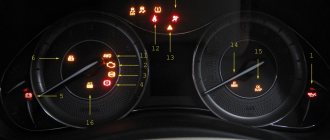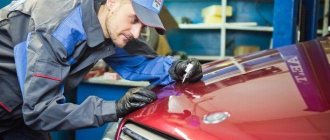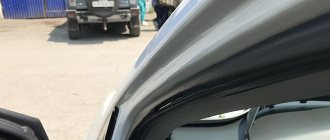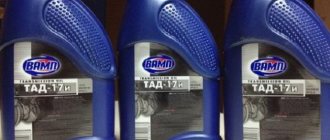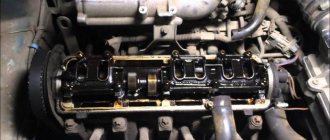We all wear leather shoes. Over time, any shoe will lose its shine and color. Cracks and abrasions appear on it. Sometimes there are situations when you want to change the shade or radically change the color of your boots or shoes. Shoe paint purchased on this site is perfect for this. With its help, you can repaint any product yourself. But we need to do it efficiently, for a long time and without special costs. Let's figure out the best way to change the color of your shoes so that the paint really sticks well and you don't have to repaint it again. First you need to choose paint. The ideal option in this situation would be AM Coatings leather paint, purchased from the online store coatingline.com.ua.
Properties of AM Coatings leather paint
- water-based, it can be mixed with other shades;
- has no characteristic odor, non-toxic;
- very easy to apply at home;
- does not wash off with snow or water;
- ideally absorbed into the structure of the product;
- even with intensive use it lasts for 3 years;
- has quality certificates;
- The paint set includes gloves and a sponge;
- large selection of colors.
How to glue wood
Types of adhesives
Modern manufacturers supply the market with various compositions that allow them to easily and correctly cope with the task of gluing wood products. Including:
- adhesive compositions based on polyurethane;
- epoxy resin;
- PVA in stock;
- contact adhesives.
Of course, the correct choice of glue directly depends on a number of factors - this is the type of wood, its features, the load on the future product and the glue seam itself, the operating conditions of the future furniture. But in general, when gluing wood, it would be correct to choose several types of glue at once - for all occasions.
Characteristics of adhesives
The first thing you should pay attention to when choosing an adhesive is its composition. It is necessary that the adhesive base is resistant to aggressive environments, temperature changes, and high humidity. The following types of wood adhesives are most in demand:
- PVA (for wood);
- industrial adhesive intended for wooden surfaces;
- "BF."
The latter is very popular among craftsmen due to its fast setting. Correctly gluing wood with this composition is not at all difficult. “BF” dries quickly and is not afraid of rotting, corrosion, humidity, or aggressive environments (gasoline and oil).
Various modifications of “BF” allow the composition to be used for both external (BF-4) and internal (BF-2) work. It is important to remember that for a better and more durable connection of wooden parts with each other, the adhesive composition should be applied correctly in two layers. The first layer is a primer; after applying it, you should wait at least an hour for complete drying. The second layer is the final one, it dries faster.
PVA glue, used in working with wood, pleases with its low price and non-toxic composition. The adhesion time of the parts is 24 hours.
It is not for nothing that PVA is in high demand, because its natural composition does not harm human health, which is especially important for the manufacture of, for example, children's furniture. The only thing you should pay attention to is how to properly glue wood using PVA, because it has low moisture resistance. Otherwise, this composition is in no way inferior to its analogues, has several varieties and can become a reliable assistant in carpentry.
Separately, it should be said about industrial glue - it is a reliable composition that is not afraid of moisture, is easily applied to wooden surfaces and ensures their correct, reliable adhesion. It does not have a negative effect on the instruments, which is important in work.
We prepare the product for painting
Any paint applies best to a well-washed and degreased surface. And it’s not just wiping your boots with a damp cloth. Shoes must be cleaned not only of visible contaminants such as dust or dirt, but also of residues of cream, wax, grease, oil, and previous paint.
If you want to repaint boots that have not yet been worn, you still need to remove the protective layer from the surface of the leather and degrease it. The best solvent for this procedure is AM Coatings. It is suitable for removing water-based and alcohol-based paints from any leather products and will clean the surface of wax, cream, shallow and greasy stains.
If the leather has cracks, chips or scratches, the liquid leather sold here will deal with them. It is applied in the same way as paint. It must be used before painting.
Organic substances used for chemical degreasing:
- White spirit cleanses the surface well from grease, but leaves a film on it that impairs the adhesive properties of the surface.
- Trichlorethylene degreases ferrous metal surfaces, but it is not recommended for use on aluminum surfaces, as well as materials clad and treated with various emulsions.
- Acetone removes grease well, but does not dissolve all types of contaminants.
- The low-boiling fraction of gasoline cleans well, but is a very fire hazard.
The most optimal option for chemically removing fats and oils from the work surface are ready-made complex chemical solutions, widely available on the market. They include several active ingredients, such as surfactants, organic solvents, alkali, and various additives. The products are water-based, which ensures fire safety and significantly reduces the toxicity of solvents, as well as the unpleasant odor characteristic of them. Complex products for removing fat and oil stains should be selected depending on the type of surface to be cleaned according to the manufacturer’s recommendations.
You can buy surface degreasing products from Docker Chemical GmbH Rus. Our specialists will tell you about how to use it. Don't waste time, request a call back right now!
Preliminary preparation of surfaces is one of the necessary conditions for obtaining the best gluing results. Bonding strength largely depends on the adhesion between the adhesive and the surfaces being joined. The more thorough and complete the preliminary cleaning of the working surface is, the greater the strength of adhesive joints (Fig. 19).
Adhesion is enhanced:
- when removing unwanted surface films after mechanical cleaning or degreasing;
- when creating new active surfaces as a result of applying primers;
- when surface activity changes after plasma treatment of metal, corona treatment, etching of metal surfaces and similar operations.
If the bonded surfaces are dirty, adhesion decreases.
Degrease the skin
In order to degrease boots or shoes, you can use a weak soap solution or alcohol. If your shoes are not very dirty, then before painting it is enough to use AM Coatings special primer, it:
- softens the skin before painting;
- will create a uniform skin texture;
- will increase the adhesion of paint to the skin by 50%;
- will provide shine to the skin after painting.
Be sure to allow the boots to dry completely after any cleaning or priming.
Working with degreasers
To degrease the part, special solvents are used. Most of them are fire hazards and have high chemical activity and, if handled incorrectly, can cause serious harm to health or damage material assets. To prevent this from happening, you must follow the following safety rules:
- Work in a room equipped with exhaust ventilation.
- Provide good lighting to the work area.
- It is strictly forbidden to use open fire within 5 meters of the work site. Of course, this also applies to smoking.
- Be sure to use personal protective equipment: rubber gloves, safety glasses or a transparent protective shield, a respirator, thick clothing, a hat and shoes that do not leave exposed skin.
- It is also recommended to use an apron made of thick canvas.
- Particular care must be taken when working with aluminum surfaces - in combination with some degreasers, fire and even explosion are possible.
The surface should be treated as follows:
- Apply the degreasing solution with a lint-free cloth.
- A second napkin of the same type is used to wipe and dry the surface.
- The procedure is carried out immediately after mechanical treatment of the surface, immediately before painting or gluing, so that it does not have time to become contaminated again.
- After the operation is completed, do not touch the degreased surface with your hands or other objects.
To check the quality of the operation performed, attach a piece of white paper to the surface. If dirt remains, it will be visible on the paper.
Another way to check is to drop water on the surface. On a well-treated surface, the water will spread out like a film; on a dirty surface, it will form a ball.
Painting
So, completely dry boots can be painted.
- We put on gloves and take a sponge.
- AM Coatings paint can be poured into the cap for convenience. Dip the sponge into the paint and, using gentle movements, apply it to the boots. It is better to make strokes in even stripes, with overlaps (1-2 mm).
- After applying a layer of paint, you need to let it dry for about 30 minutes. You can speed it up and dry it with a hairdryer for 5 minutes.
- To paint shoes a different color, the paint is applied in several layers (up to 3 for a radical color change). Each layer must be thoroughly dried.
How to remove dried glue from wood
Even knowing how to glue wood correctly, you may encounter a situation where excess glue still appears on the surface of the wood. In this case, it should be removed either immediately after application or after it has dried. It is not worth doing this in the intermediate state of the glue - it will only strengthen the defect. You can properly clean a surface with excess adhesive either by grinding or with a special carpentry tool - a chisel.
Stained areas on the finished product must be cleaned without fail, since after applying the decorative finish, they will still appear and spoil the aesthetic appeal of the furniture. For all defects to become obvious, just moisten a rag in white spirit and wipe the wooden surface. A properly cleaned surface will be the key to a beautiful product; the decorative layer will lie evenly on it.
Result
Your shoes have finally acquired the desired color. But you can also emphasize the individuality of your boots or shoes. I advise you to pay attention to AM Coatings leather varnishes.
Thanks to varnish, boots can be given both a glossy and matte effect. It is enough to apply one layer of varnish to an already painted surface. This product is applied very simply with a sponge. But we must remember that before applying varnish, the boots must be allowed to dry completely for 24 hours. It is possible to apply varnish without prior painting.
Leather products - jackets, boots, sneakers, car interiors - even with careful use, over time they lose their former attractiveness. Defects appear (scratches, abrasions, cracks), the material requires repair. Restoring the appearance of shoes and other things is possible at home. To do this, you only need high-quality leather paint.
Organic solvents
The simplest means of degreasing the surface is organic solvents. White spirit or acetone are most often used. Their operating principle is as follows. By applying the product to the surface with a brush or rag, the organic impurities on it dissolve. After this, all that remains is to remove them using a clean, dry cloth or compressed air.
A significant disadvantage of this degreasing method is the high risk of fire. In addition, organic solvents may not completely remove contaminants.
Types of paints and advantages of repair
Is it worth repairing leather goods or is it easier to buy a new item? Damage to items made of genuine leather often occurs, and it will be expensive to buy a sofa and other furniture, an expensive bag or outerwear. Painting with a special leather product will help quickly and inexpensively remove shallow and medium-sized defects.
Advantages of painting products:
- the ability to do the work yourself;
- instant restoration of the integrity of the material, its color and structure;
- significant softening of natural and artificial leather, eliminating roughness.
There are different types of paints on the market - all work well for leather products.
Surface testing by wettability test
The quality of the preparedness of the surface for gluing can be determined using a fairly simple method of repelling liquid. Drops of clean water are applied to the cleaned surface. If the surface is not sufficiently cleaned, the spherical shape of the drop remains, therefore, this surface must be cleaned again. On a sufficiently clean bonding surface, water spreads.
The liquid repelling method cannot be used on anodized magnesium and aluminum surfaces.
The main advantage of the water repellency test method is its ease of availability.
In addition, the use of this method is not always acceptable due to different water hardnesses, which create different surface tensions. Even the use of distilled water during water repellency tests sometimes does not provide reliable results. Therefore, for special cases it is necessary to use surface-stressed liquids, which have a precisely defined surface tension. It should also be taken into account that carrying out water repellency tests only allows you to check the preparedness of the surface, and not the possibility of gluing as such.
Surface preparation can be checked using the "water repelling" method.
The purpose of this operation is to remove various contaminants from the bonded surfaces that cause a decrease in the strength of the adhesive joints. The level of strength reduction depends on the nature of the substance contaminating the surface, its concentration on the surface, as well as on the composition of the bonded material and the adhesive used.
The maximum permissible concentration of contaminants that does not affect adhesion is from 0.01 to 1 mg per 1.5 cm2 of surface area.
To degrease surfaces to be bonded, organic solvents, aqueous detergents, alkaline preparations and special alkaline compounds are used.
Gasoline and acetone are usually used as solvents for degreasing metal surfaces; for degreasing surfaces of polymeric materials and rubber - tetrachlorethylene, trichlorethylene and isopropyl alcohol, provided that these materials do not dissolve in the selected solvent.
When using solvents by wiping the surface, only incomplete cleaning can be achieved, since contaminants only move along the treated surface.
Organic solvents cannot be used:
1) to remove contaminants containing soap, grinding paste, dust, etc., since they only dissolve fat, and inorganic residues are not completely removed from the metal surface;
2) for degreasing wet surfaces, since they do not mix with water and in wet areas do not penetrate the metal surface.
Degreasing with organic solvents
The surfaces of most plastics absorb solvents, therefore, after degreasing the surface, sufficient open exposure should be allowed until the solvent is completely removed or accelerated drying is carried out, otherwise the formation of a porous adhesive joint may occur.
Organic solvents are highly flammable. In order to reduce the fire hazard, antistatic additives are introduced into their composition, for example Sigbol (TU 38.101741-78), which is added to the solvent in an amount of 0.002% (wt).
It is preferable to degrease metal surfaces (with the exception of titanium alloys) in solvent vapors, such as trichlorethylene or tetrachlorethylene. Due to the temperature difference between the solvent vapor and the metal, the solvent vapor condenses on the metal parts, dissolving contaminants. Many vapor degreasing units are equipped with a device for spraying parts with clean solvent. Trichlorethylene vapors degrease steel, tungsten, magnesium and molybdenum alloys; tetrachlorethylene vapors degrease aluminum, aluminum, tungsten, magnesium and molybdenum alloys. Treatment duration is 0.5-5 minutes.
Degreasing with detergents
Aqueous detergents can be used to degrease metal surfaces. A very effective washing solution is TMS-31 (TU 38.40740-71), which is an aqueous solution of a mixture of surfactants, monoethanolamides, oleic acid, ethyl alcohol and triethanolamine (trihydroxyethylamine).
As a washing solution, you can also use a composition containing sodium phosphate (16 g/l) and the emulsifier Syntamid-5 (2 g/l), which can be disposed of by biological decomposition.
Read also: Hammer slap leg with your own hands
Degreasing with aqueous solutions of detergents is carried out using the following technology: washing by dipping into an aqueous solution of detergent at a temperature of 70-80 0C for 3-15 minutes; sequential rinsing in hot (60-70 0C) and cold (15-20 0C) running water. To prevent corrosion, metal surfaces, after washing in water, are treated with a cold aqueous 0.5% solution of potassium dichromate and dried at a temperature of 110-120 0C. This surface treatment is recommended for steel, copper, titanium, aluminum and magnesium alloys.
Other methods of degreasing surfaces
The combination of aqueous cleaning solutions and ultrasound can improve the quality of degreasing. For these purposes, you can use ultrasonic installations of the UZU-0.25 type with an output acoustic power of 230 W and a frequency of 18 kHz and OD type installations with a productivity of 30-48 m2/h. The intensity of ultrasonic vibrations is (1-3)*10-4 W/m2.
Alkaline preparations can be used to degrease surfaces. Such formulations typically consist of an alkali metal salt, a detergent and a surfactant. To increase cleaning efficiency, the compositions are usually heated.
After degreasing, wash with running water at a temperature of 15-60 0C until the wash water is neutral. Demineralized water should be used for rinsing. For most metals, the surfaces are then treated with a corrosion inhibitor (an aqueous 0.5% solution of potassium dichromate) at 20-25 0C for 30 s, after which they are dried at a temperature of 15-30 0C by blowing with compressed air or in drying ovens until completely removed liquid phase from the bonded surfaces.
A very effective way to remove contaminants from the bonded surface is argon plasma treatment. It is carried out using a 20 W unit at a jet speed of 50 cm3/min for 10-60 minutes. Gas plasma treatment increases the adhesion of the adhesive composition to the treated surface. At the same time, the volumetric properties of the substrates do not deteriorate, since only the surface layer with a depth of no more than 10 microns is exposed. This treatment improves surface wettability; the water contact angle is reduced to 0°. The choice of gas and duration of plasma treatment depends on the type of bonded surface and contaminants.
Some of the most commonly used surface cleaning methods are listed in the table below:
Treatment at 40-70 0C for 3-5 minutes with an aqueous solution (g/l):
Sodium phosphate 20-50 Sodium hydroxide 8-12 Sodium silicate 25-30 Rinse in running water (15-50 0C) until the wash water is neutral
Aluminum and its alloys (for anodizing)
Total alkalinity of solution
Treatment at 40-70 0C for 3-5 minutes with an aqueous solution (g/l):
Sodium phosphate 50-70 Sodium silicate 25-35 Liquid soap 3-5 Rinse in running water (15-50 0C) until the wash water is neutral
Treatment at 60-90 0C for 3-5 minutes with an aqueous solution (g/l):
Sodium carbonate 20-40 Sodium phosphate 20-40 Sodium silicate 20-30 Washing in running water (15-60 0C) until the wash water is neutral and blow-drying at 15-30 0C or in an oven at 110 0C
Treatment at 60-80 0C for 1-7 minutes with an aqueous solution (g/l):
Sodium silicate 20-30 Sodium hydroxide 10-12 Sodium phosphate 20-40 Washing in running water (40-60 0C) until the wash water is neutral and drying by blowing at 15-30 0C or in an oven at 60 0C
Polyethylene, polypropylene, fluoroplastic, rubber
Treatment in trichlorethylene, at 85-90 0C 30 min 0.5-5 min
Tungsten and its alloys
Steel, magnesium and molybdenum
PI 1.2.218-82 OST VZ-4338-79
Treatment in tetrachlorethylene at 120-125 0C 30 min 0.5-5 min
Tungsten and its alloys Aluminum, aluminum, magnesium and molybdenum alloys
PI 1.2.218-82 OST VZ-4338-79
Treatment at 70±10 0C for 1-7 minutes with an aqueous solution (g/l):
Sodium phosphate 20-30 Sodium silicate 25-35 Sodium hydroxide 10-12 OP-10 2-3
Rinse in running water until neutral reaction
rinsing water and drying in an oven at
95±5 0C for 30-40 min
Used before treating the surface of fluoroplastic with complexes
Cleaning and degreasing surfaces is simply necessary for high-quality painting or gluing of various objects. The fact is that grease and dirt significantly reduce the adhesion of surfaces and finishing materials, which of course affects the service life of a particular base. Let's look at what materials are used for degreasing and what sequence should be followed when doing all the work yourself.
How to degrease the surface:
Methods of dyeing leather
Natural or artificial leather can be given any shade. Some people use aniline dyes, but the result after dyeing can be unpredictable. For industrial dyeing, chemical dyes and vegetable tanning technology are used, but at home they use other methods - surface and deep dyeing.
Deep painting
The basic rule is to completely saturate the skin with the composition. That is, the thing that a person has is soaked in a container with dye. An important point is to regularly wipe, turn over, and wring out the item, otherwise dry, unpainted areas may remain.
After the paint has expired, the leather is secured to a wooden board and stretched so that it does not shrink during drying. Next, if specified in the instructions, apply fixing compounds (usually salt or vinegar). Then fat impregnation is performed.
Surface painting
The main difference between surface painting and deep painting is that the paint is applied only to the front side, and the skin is only slightly wetted. Usually all finished products are painted this way. After purchasing the liquid composition or diluting the dry powder, the solution is applied to the product.
Many people experiment using different means at hand to color the skin. So, hair dye will color the material well. For example, products selected for brown eyes and dark skin usually have a very rich color, so they will give even light-colored products the desired dark shade.
As an alternative, stamp inks and ballpoint pen ink can be used. First you need to degrease the item and remove the protective layer of nitro coating - this is done by wiping with acetone. Afterwards, paint is applied with a brush in several layers and the item is allowed to dry.
Using primers to prepare bonded surfaces
Primers typically contain reactive, soluble chemical compounds. They are applied with a brush or sprayed onto the surface of the material. Solvent particles remaining after treatment can be neutralized. When certain types of primers are used, the surface can be ready for bonding immediately, as is the case with polyolefin primers in cyanoacrylates. Thanks to surface primers, surface adhesion improves. They act like a chemical bridge between the adhesive and the surface. In a primer, the reactive moiety is usually multifunctional with respect to a specific set of reactive groups that react with the working surface as well as with additional adhesive-like groups.
Read also: Basic movements of classical dance
| Material | Degreasing | Mechanical restoration | Etching | Primers (depending on the type of glue) | Crowned discharge | Low pressure plasma |
| Metal | xxx | xxx | X | X | X | |
| Glass | xxx | X | X | X | X | X |
| Ceramics | xxx | X | X | X | X | |
| Rubber | xxx | x | X | X | X | |
| Tree | x | xxx | X | X | ||
| Plastics | xxx | xxx | X | X | xxx | xxx |
x = additional or alternative method
xxx = most suitable method
How does a film form on the inside of glass?
During operation, the glass will invariably be covered with a subtle cloudy film from the inside. It is this that interferes with comfortable driving and distracts the driver.
There are two factors for glass contamination from the inside:
- dust and dirt settling on the glass. When condensation settling on the glass joins them, they form a film
- smoking in the car. Cigarette smoke produces a resin with a yellowish tint, which also settles on the glass.
In sunny weather and at night, in the light of the headlights of oncoming cars, glass covered with such a film from the inside glares and blinds the driver. Moreover, even a fingerprint can interfere with the view.
But for some reason, many owners forget about such an important procedure as cleaning the glass from the inside. And even after professional washing, stains often remain.
Experts recommend using a soft microfiber cloth to clean the inside of the glass. But to avoid any streaks, it is important to wipe each area of the surface with a clean piece of microfiber; this is a rather labor-intensive process.
The following are used as cleaners:
- folk remedies
- household chemicals
- special aerosols
Let's look at the advantages and disadvantages of each strategy.
Cheap, cheerful: folk remedies
To clean glass using folk remedies, ammonia is used. It is added to water and the glass is wiped with this composition. Or simply apply a little ammonia to microfiber and clean the surface, paying special attention to the corners. The method is truly “old-fashioned” and accessible. But literally poisoning people in the car, including yourself, with ammonia vapor, and then ventilating the car with the ammonia of ammonia is a dubious pleasure.
For the same reason, advice to wash glass with a vinegar solution or a homemade composition based on alcohol or alcohol and glycerin is questionable.
Another popular option is to prepare a soap solution for cleaning glass. But in terms of time and effort spent, this is already closer to general cleaning of glass - long and inconvenient.
Advice to clean the glass with water and a drop of Fairy and other similar products is broken by reality: owners report that after such treatment a greasy rainbow film and stains remain on the glass. We absolutely do not recommend it.
https://www.youtube.com/watch?v=HVF0Kk5DjbI
Wiping glass with a sponge with salt or half a raw potato is a way to amuse your neighbors. It’s inconvenient, hardly effective, and only translates products. In general, not all hand-made glass cleaning methods are equally useful.
Finally, there are tips to use acetone or WD-40 to clean glass. These are too aggressive products and are not at all intended for cleaning windshields. It's better not to take risks.
Quick and easy: household chemicals, a couple of life hacks
If the glass requires cleaning from the inside, but is not yet “horror-horror”, you can use an ordinary household “spray”, which is used to clean glass and mirrors at home. It is better if the composition contains alcohol and ammonia.
This product costs a penny, it can be sprayed conveniently from a spray bottle, it cleans without streaks and does not leave behind any unpleasant odors.
Life hack: instead of a microfiber cloth, it is better to use crumpled newspapers. They clean glass squeaky clean and much faster. It is also believed that printing ink prevents car windows from fogging up.
If you don’t have such a product at hand, it doesn’t matter: you can put a little “anti-freeze” on a rag or newspaper; you’ll probably find a supply of it in the trunk. Simple, always accessible and effective.
Expensive and professional: aerosol cleaners
We are talking about buying professional auto chemicals for cleaning glass in auto supply stores.
Specialized sprays will help you cope with even heavy dirt; all you need to pair them with is a new microfiber or natural suede cloth.
We suggest you familiarize yourself with How to attach a suction cup to a wall
It is believed that glass should be cleaned at least once a year using strong car cosmetics detergents, since only they can cope with specific car contaminants.
Be sure to use professional car care products to clean tinted windows.
If your glass is not tinted and you clean it regularly, there is no need to purchase aerosol sprays.
- For the procedure, it is better to choose non-sunny weather - in the sun the product will dry quickly, leaving streaks.
- In cold weather, remove only that dirt from the glass that interferes with your view, and it is better to carry out full cleaning at above-zero temperatures.
- Before cleaning, wipe the glass with a dry cloth to remove dust.
- It is better to cover the dashboard with newspaper to prevent product and dirt from getting on it.
- The cleaner is applied not to a rag or newspaper, but to the glass, and then rubbed and polished.
- Use a new piece of cloth to clean each area of glass, and after cleaning, use a new microfiber cloth only on the body, not on the glass again.
- After cleaning the glass, it is recommended to rub it until dry from the inside with shaving foam or fabric softener with a surfactant in the composition: plaque will not appear for 2-3 months.
- To prevent condensation from collecting so much, ventilate the interior regularly, especially in winter before parking.
- If, despite your efforts, stains and deposits on the glass appear every 2-3 weeks, and there is no smoking in the cabin, check the serviceability of the air conditioning and ventilation system and replace the cabin air filter
- Remember that no amount of cleaning will help restore glass that has been frosted with scratches and yellowed over the years. You need to replace glass at a service center not when it breaks, but when the time comes.
Find out what else will help make driving more comfortable in our article “Three steps to improve visibility in a car.”

